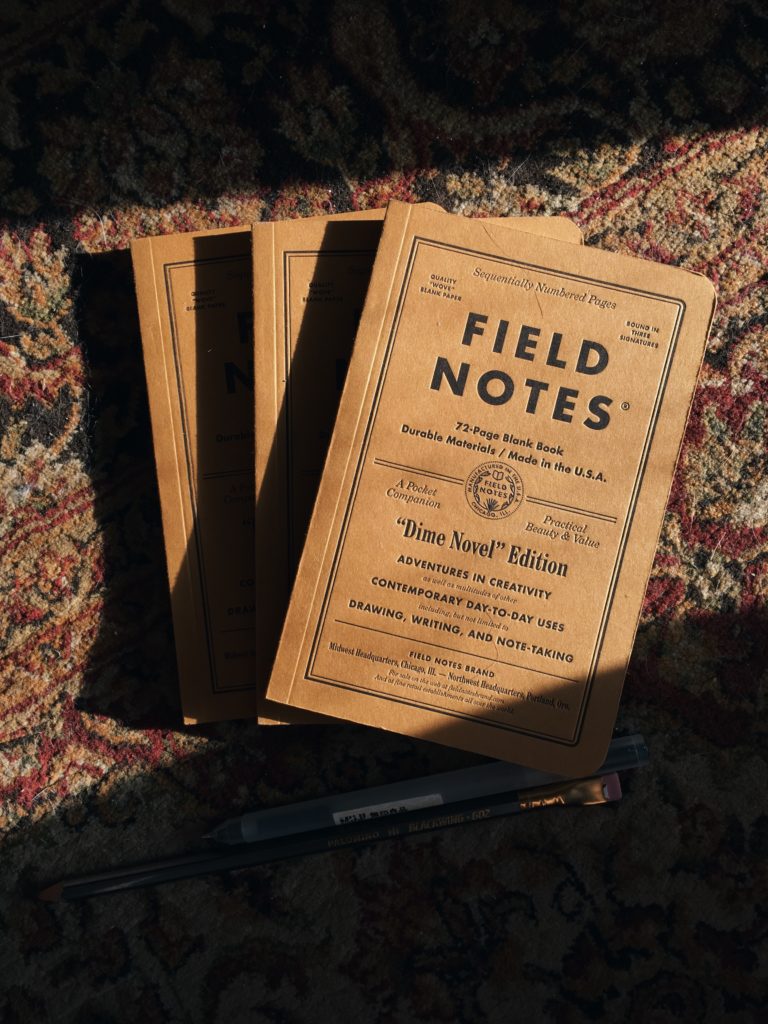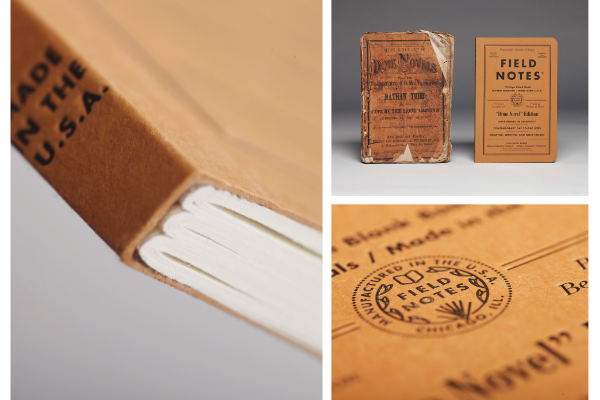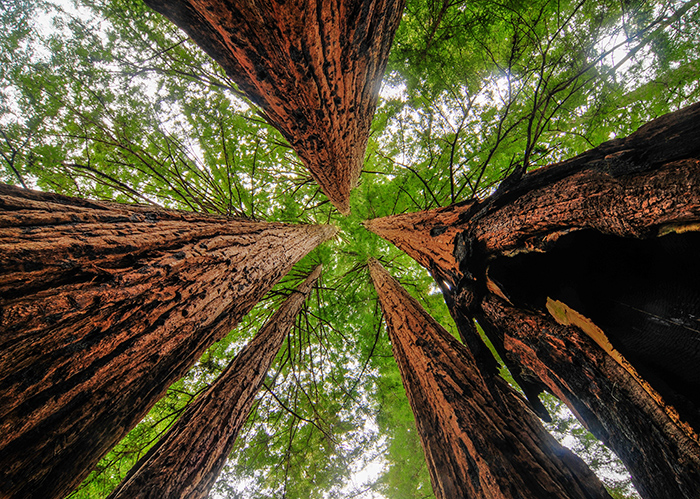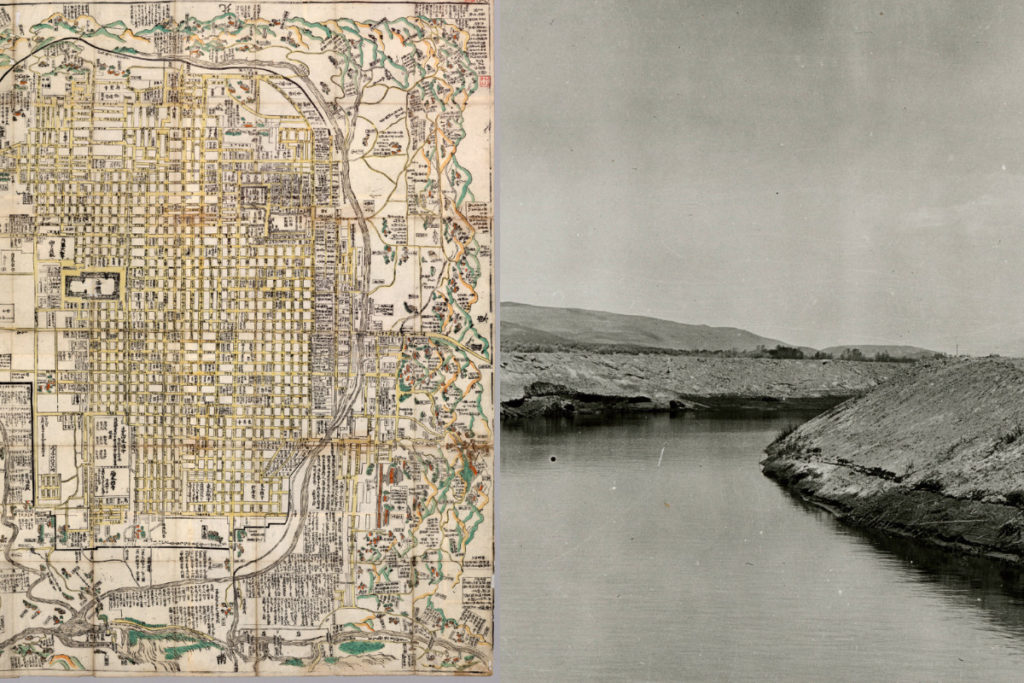3 Questions With Field Notes’ Bryan Bedell
The “Dime Novel” edition of Field Notes ‘Quarterly Releases’ series, inspired in part by a visit to Northern Illinois University’s dime novel collection has become one of our favorite examples of ways our grant recipients’ collections have been used to inspire something new. For this month’s newsletter, we asked designer Bryan Bedell to tell us about his work.
We’re excited to be chatting with you! To get us started, can you tell us a bit about yourself and your role at Field Notes?
I’m Bryan Bedell, I’ve been with Field Notes (at the Chicago HQ) since Jim Coudal and Aaron Draplin started the company in 2007. (I’ve been with Coudal Partners for 22 years). I do design, print production, photography, I help out with the films, and a little bit of everything else here, It’s a small company (ten of us) so we’re all pretty involved in everything.
So much of Field Notes’ product design is informed by traditions of the past. What are some of your favorite places to look for inspiration and ideas?
 Field Notes as a whole were inspired by Aaron Draplin’s collection of 20th-century promotional memo books from agricultural and manufacturing companies. (there’s a great film about his collection on our site). The designs are all over the place, aesthetically, and looking at them is sort of a lesson on how design and printing changed over the century. So there is plenty of influence there, but we rarely take them literally, we’ll borrow a detail here or there. Sometimes we get pretty modern. I always say “Vintage” and “Modern” are both great, but “retro” is usually a disappointing compromise. We try not to get nostalgic so much as learn from the past to make a useful, attractive, sort-of-hopefully-timeless product.
Field Notes as a whole were inspired by Aaron Draplin’s collection of 20th-century promotional memo books from agricultural and manufacturing companies. (there’s a great film about his collection on our site). The designs are all over the place, aesthetically, and looking at them is sort of a lesson on how design and printing changed over the century. So there is plenty of influence there, but we rarely take them literally, we’ll borrow a detail here or there. Sometimes we get pretty modern. I always say “Vintage” and “Modern” are both great, but “retro” is usually a disappointing compromise. We try not to get nostalgic so much as learn from the past to make a useful, attractive, sort-of-hopefully-timeless product.
For me, personally, inspiration is everywhere. I love to look at a printed piece of ephemera from any era and really dig into it and learn how it was made and think about what the visual trends were at the time.
For me, personally, inspiration is everywhere. I love to look at a printed piece of ephemera from any era and really dig into it and learn how it was made and think about what the visual trends were at the time. What was possible with the technology that was available? Why the designer and printer made it the way they did? Then I can transfer that knowledge into our products. I think you learn a lot more that way than just looking at the graphic design alone. I’ve started thinking of it as “Forensic Design,” that’s probably not the right word but it sounds good.
All of the notebooks, and especially the Quarterly Releases series, highlight small details that hearken back to materials from the past. That’s something many librarians and archivists love about the collections they work with, too. Do you have recent examples of ways the rediscovery of details or elements that seemed lost or forgotten has sparked a new creation?

That goes along with the last question, yes, it’s very much about the details. Looking at the craftsmanship (or lack of craftsmanship!), the materials… The Dime Novels were a perfect example of that, Jim came across them online and it was such a neat story, so we tracked down a cheap beat-up example on ebay and we literally dissected it to see how it was put together. We had to take some liberties with type (The Dime Novels were published in the 1860s, our beloved Futura was first released in 1927) and production (we used much higher quality paper!) but boy did we learn a lot about how and why they were made. Going out to NIU and meeting Matthew Short was super-rewarding because not only was it a fantastic resource for us, it was great to meet someone who was just even more excited about Dime Novels as we were. As deep as we dive into rabbit holes in coming up with new Field Notes, we know we’re dilettantes compared to the ‘real’ experts, and it’s always rewarding to meet them, we’ve met travelling salesmen, artists that hand-make book endpapers, forest rangers, Antarctic explorers, lumberjacks, scientists…
Letterpress printing is another great example, I was always casually interested in it, and now through Hamilton Wood Type and Printing Museum, and our “Two Rivers” and “U.S. of Letterpress” projects, I’ve been lucky to meet dozens of expert printers. I’ve barely touched a press myself but I’ve learned so much from them and made some good friends in that community. “The Design World” seems self-absorbed and competitive, and their world is collaborative and super-friendly. I like to look outside of design conferences and magazines and websites, because design is everywhere. Any design (or writing, or art, or anything creative) has superficial elements that stand out and that are easy to copy, and I think a lot of people get hung up on ‘style.” But style is only one of the elements of design. Digging deeper to understand what’s behind it all… that’s a lot more rewarding than trying to copy the surface ornamentation.
What are the most rewarding parts of the design process for you?
The best part about my job is simply “making stuff.” I have boxes of these things, and I’m proud of them, and whatever happens to the “collector’s market” in the future (we sure didn’t see that coming!) they’ll always be useful as notebooks, and I can show them to people and say “I made this.” there aren’t a lot of jobs left where you have a physical result, a finished product of your work. The second-best part is meeting customers and seeing how excited they get about our product, it’s nice to know people appreciate your work.
Where can people go to learn more about your own work and Field Notes?
Fieldnotesbrand.com, of course, and once Covid passes, we’ll reopen the shop in Chicago. I like to talk to customers in person and show them around the studio. Aaron’s book “Pretty Much Everything” has a good history of Field Notes in it, and Aaron, Jim, and I have done a lot of interviews and podcasts about Field Notes that are easy to find on the web. Aaron (in normal times) travels and speaks at dozens, sometimes hundreds of events a year.
Personally, I don’t do much design work outside of Field Notes, I spend most of my free time tinkering with old motorscooters and cameras and my jukebox, I like to dig into stuff and get dirty and that probably gives me as much design inspiration as anything else. Maybe I can find work as an apprentice Vespa mechanic if this notebook thing doesn’t pan out. But we’ve only done fifty limited editions, we’ve got plenty of ideas left.
In 2017, everyone who attended the DLF Forum received a copy of the Dime Novel notebook thanks to a donation by the company. Still have yours? We’d love to see a pic! Share it on social media and tag @clirnews. CLIR is also hosting a giveaway of Field Notes Dime Novel edition notebooks, open through December 16.



